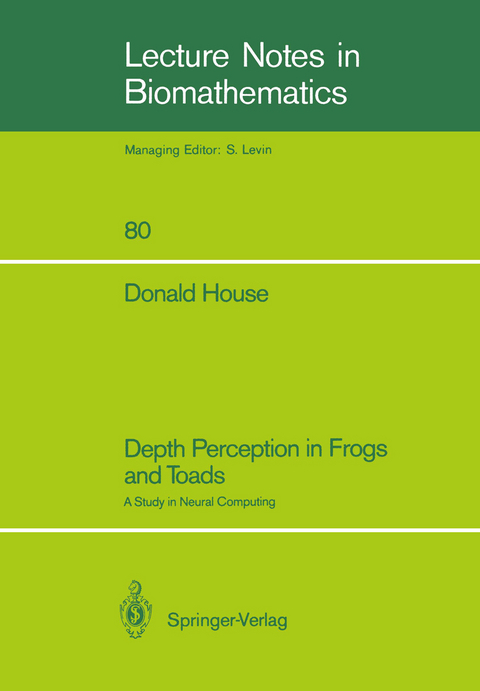
Depth Perception in Frogs and Toads
Springer-Verlag New York Inc.
978-0-387-97157-5 (ISBN)
1 Introduction.- 2 Modeling Depth Perception in Frogs and Toads.- 2.1 Previous Models of Depth Perception.- 2.2 Depth Perception in Frogs and Toads.- 2.3 Anatomy and Physiology.- 2.4 Functional Analysis of the Major Visuomotor Centers.- 2.5 Modeling Assumptions.- 2.6 Conclusions.- 3 Monocular and Binocular Cooperation.- 3.1 Design of the Model.- 3.2 Methods.- 3.3 Results.- 3.4 Discussion.- 4 Localization of Prey.- 4.0.1 Background.- 4.0.2 Model overview.- 4.1 Methods.- 4.2 Results.- 4.3 Discussion.- 5 Towards a Complete Model.- 5.1 The Cue Interaction and Prey Localization Models.- 5.2 An Extended Model of Accommodation Control.- 5.3 Experimental Verification of the Models’ Depth Scale.- 5.4 Discussion.- 6 Conclusions.- 6.1 The Models and their Contributions.- 6.2 Suggestions for Animal Experiments.- 6.3 Suggestions for Robotic Algorithms.- A Modeling and Simulation Details.- A.1 Representation of a Neural Unit.- A.2 Representation of a Neural Layer.- A.3 Numerical Methods.- A.4 The Cue Interaction Model.- A.5 The Prey Localization Model.- B Simulation Optics.- B.1 Optical Geometry.- B.2 Representation of Prisms.- B.3 Retinal Projections.- B.4 Disparity Input Planes.- B.5 Accommodation Input Planes.- B.6 Representation of Lenses.- B.7 Conversion from Internal to External Coordinates.- B.8 Nominal Parameter Settings.
| Reihe/Serie | Lecture Notes in Biomathematics ; 80 |
|---|---|
| Zusatzinfo | VII, 135 p. |
| Verlagsort | New York, NY |
| Sprache | englisch |
| Maße | 170 x 244 mm |
| Themenwelt | Sachbuch/Ratgeber ► Natur / Technik ► Naturführer |
| Informatik ► Theorie / Studium ► Künstliche Intelligenz / Robotik | |
| Informatik ► Weitere Themen ► Bioinformatik | |
| Mathematik / Informatik ► Mathematik ► Algebra | |
| Mathematik / Informatik ► Mathematik ► Angewandte Mathematik | |
| Medizin / Pharmazie ► Medizinische Fachgebiete ► Neurologie | |
| Medizin / Pharmazie ► Studium | |
| Naturwissenschaften ► Biologie ► Humanbiologie | |
| Naturwissenschaften ► Biologie ► Zoologie | |
| ISBN-10 | 0-387-97157-2 / 0387971572 |
| ISBN-13 | 978-0-387-97157-5 / 9780387971575 |
| Zustand | Neuware |
| Haben Sie eine Frage zum Produkt? |
aus dem Bereich


